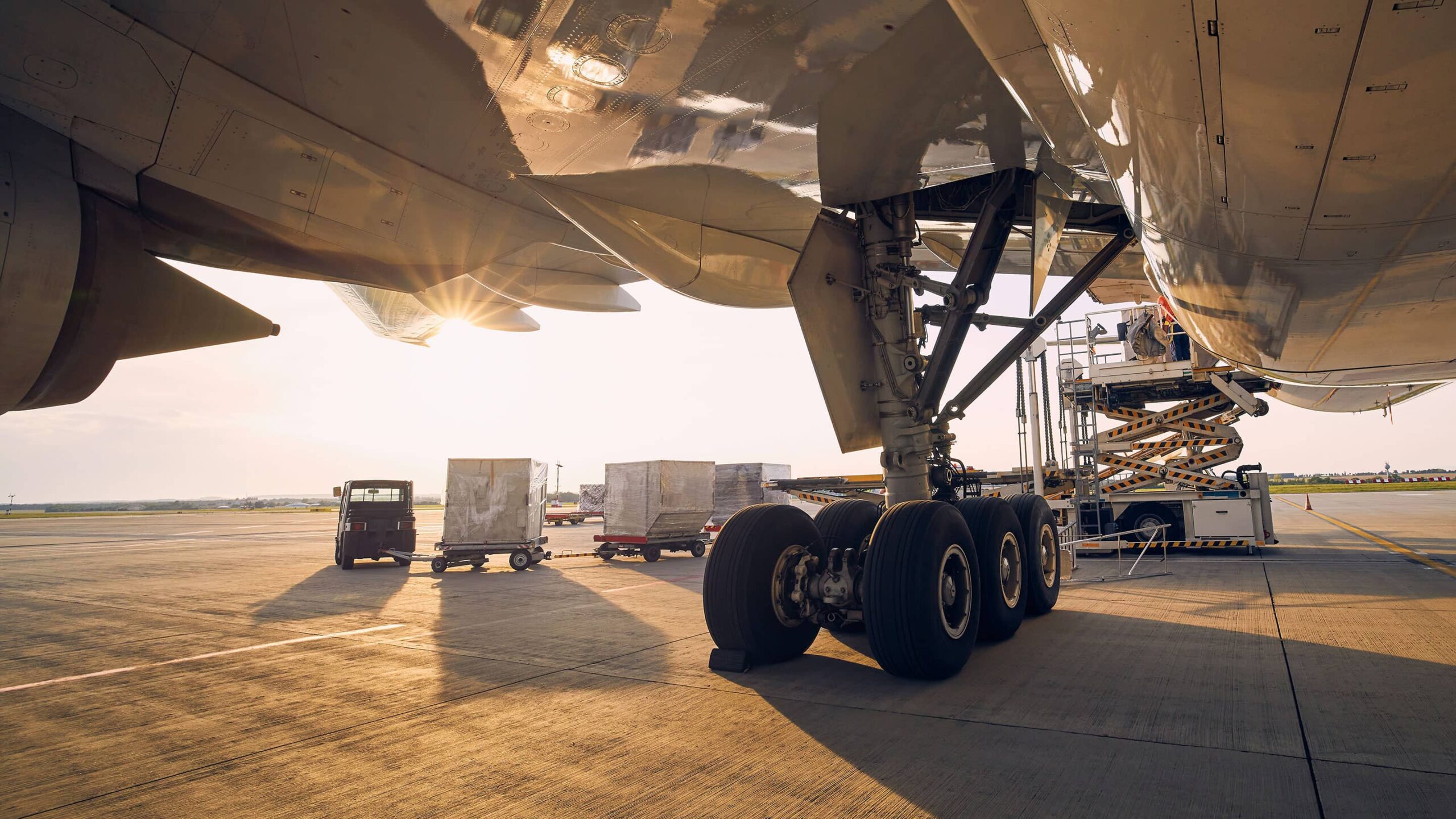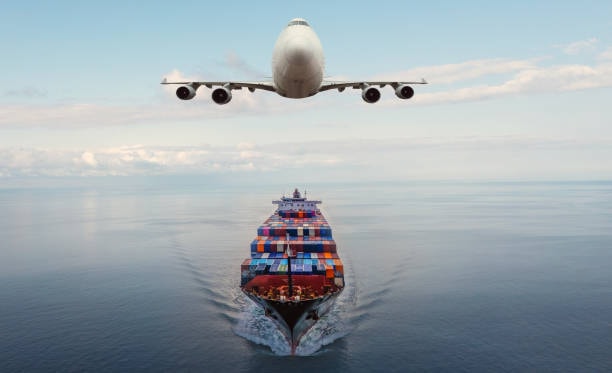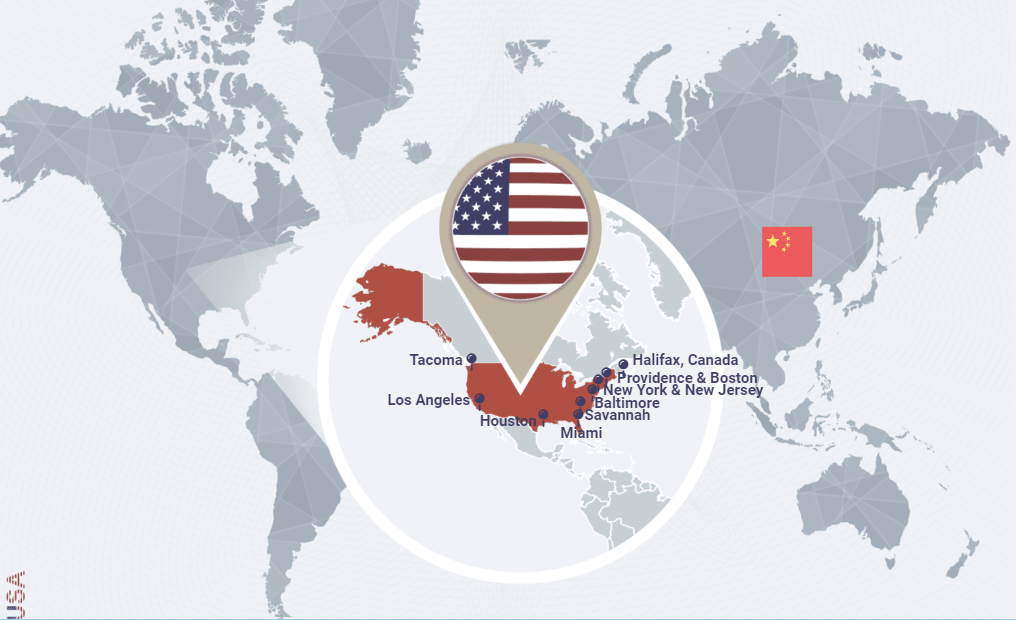China’s Freight Forwarders Thrive Amid Challenges: Sea and Air Logistics Embrace Digital Growth
China’s logistics sector is a vital engine of global trade. From China freight forwarders orchestrating container movements across oceans to nimble China air freight forwarders enabling rapid delivery of e-commerce orders, the industry sits at the intersection of supply chains and consumer demand. Despite geopolitical headwinds, including tariff disputes and changing customs policies, Chinese logistics companies are demonstrating resilience and innovation. This article offers a deep dive into how China sea freight forwarders and air freight specialists are turning challenges into opportunities by embracing digitalization, partnering with e-commerce platforms, and expanding global networks.
A Changing Trade Landscape: Challenges and Adaptation
The U.S.–China trade war has caused real disruptions in 2025, yet it also underscores the adaptability of China’s freight sector. In early May, Hong Kong’s freight forwarding industry faced a 41 % cancellation of container capacity to North America. Analysts warned that high tariffs—145 % imposed by the United States and 125 % retaliatory duties from China—could squeeze margins for exporters. While these figures highlight tension, forwarders have responded by rerouting cargo, leveraging free‑trade zones, and exploring alternative markets in Southeast Asia and Europe.
Similarly, on the air side, the suspension of the U.S. “de minimis” duty‑free exemption for low‑value shipments led to a nearly one‑third reduction in air freight capacity between China and the United States. Even so, China air freight forwarders quickly diversified: they redirected capacity to Latin America and Mexico, forged new partnerships with carriers in the Middle East, and utilized dedicated freighters to support South‑East Asian markets. The ability of China freight forwarders to pivot in response to policy changes reveals a culture of agility and rapid problem solving.
Leveraging the Cross-Border E-Commerce Boom
One of the most positive developments for China freight forwarders is the explosive growth of cross‑border e‑commerce. In 2015, cross‑border e‑commerce shipments from China averaged fewer than two million packages per day; by 2024, that figure surged to more than 20 million packages daily. This shift from palletized cargo to individual consumer parcels has created new revenue streams for China air freight forwarders, who now handle shipments averaging 500 grams rather than 20‑ton containers.
Platforms such as Alibaba’s Tmall Global and JD Worldwide have become critical gateways for international brands. By February 2024, Tmall Global featured more than 46,000 international brands serving roughly 100 million Chinese consumers. These platforms not only connect foreign companies to China’s vast digital market but also provide opportunities for China sea freight forwarders and air forwarders to offer integrated services, including customs clearance, fulfillment, and returns management.
Government policy supports this growth. Pilot free‑trade zones allow foreign goods to be stored in bonded warehouses until sold, streamlining customs procedures. Chinese freight forwarders operating in these zones can offer seamless cross‑border services to e‑commerce sellers, effectively combining sea freight, warehousing, and last‑mile delivery within one ecosystem.
The Small Package Revolution: New Business Models for Forwarders
The e‑commerce boom has forced China sea freight forwarders and China air freight forwarders to rethink their business models. Traditional freight forwarding focused on consolidated shipments and port‑to‑port transport. Today, companies are building sophisticated networks that extend all the way to consumers’ doorsteps.
In markets across Europe, consumers expect delivery within three to five days and are willing to pay premiums for speed. In emerging economies, price sensitivity drives demand for cost‑efficient shipping solutions. To meet these varied expectations, forwarders have created flexible service tiers—express, standard, and economy—tailored to each region. They partner with local courier services, delivery startups, and crowd‑sourced platforms to overcome last‑mile challenges. These partnerships ensure that small packages reach customers efficiently, even in rural areas.
Returns processing adds complexity: e‑commerce orders have return rates of 15–30 %, far higher than traditional business‑to‑business shipments. China freight forwarders now manage reverse logistics through dedicated collection networks, quality inspection centers, and recycling programs. This capability transforms logistics providers from simple carriers into full‑service partners for online merchants.
Technology as a Competitive Differentiator
Advanced technology underpins the success of modern freight forwarding. With millions of parcels traveling simultaneously, real‑time visibility is indispensable. Leading China air freight forwarders and China sea freight forwarders deploy digital platforms that track each package across multiple transport modes. These systems automatically import order information from e‑commerce marketplaces and generate compliant shipping documents.
Artificial intelligence and machine learning optimize routing and predict delivery times, enabling forwarders to adjust operations proactively. AI‑powered algorithms factor in weather, customs backlogs, and carrier performance to select the fastest or most cost‑effective routes. Data analytics deliver insights on cost patterns and customer satisfaction, guiding merchants on inventory placement and service selection.
Beyond core logistics, many China freight forwarders offer technology‑enabled value‑added services. Custom packaging solutions meet consumers’ branding expectations, while integrated digital payment platforms simplify the collection of duties, taxes, and shipping fees in local currencies. Quality control and inspection services ensure product integrity when goods ship directly from manufacturers to end consumers. Such offerings enhance customer satisfaction and differentiate forwarders in a crowded marketplace.
Strategic Partnerships and Global Expansion
Partnerships are another key pillar of growth. Major China freight forwarders work directly with e-commerce platforms, offering integrated shipping solutions and shared technology systems. Bulk pricing arrangements and coordinated customer service programs create seamless experiences for merchants and consumers.
Freight forwarders also partner with digital payment processors to handle duties, taxes, and shipping fees. This collaboration eliminates currency conversion hurdles and ensures compliance with financial regulations. Additionally, some have invested in overseas fulfillment centers, positioning inventory closer to end consumers for faster delivery and reduced shipping costs. This level of integration allows China sea freight forwarders to compete with domestic logistics providers in target markets.
Regional specialization further enhances competitiveness. By developing expertise in markets such as Turkey, Brazil, and Southeast Asia, forwarders adapt to local regulations, cultural preferences, and infrastructure constraints. In Brazil, for example, freight forwarders must navigate complex customs procedures and provide customs duty pre‑payment services. In Europe, stringent data privacy regulations demand secure data handling. This specialized knowledge helps Chinese forwarders capture opportunities in diverse markets.
Tariff Management and Regulatory Compliance
Tariff uncertainty has become a central feature of 2025’s global trade environment. However, rather than deterring shipments, it has prompted new strategies. A “State of Freight” update in August 2025 revealed that a 90‑day extension allows imports from China to continue facing a manageable 30 % tariff until November 9—a notable improvement over the previously threatened 54 % and default 145 % rates. This predictable rate has encouraged shippers to resume bookings and allowed China sea freight forwarders to plan vessel allocations more confidently.
Tariffs vary based on the goods’ Harmonized Tariff Schedule (HTS) codes and country of origin. Forwarders now offer advisory services that help exporters identify applicable duties and avoid unexpected costs. They provide access to tariff trackers and counsel clients on how tariffs stack across reciprocal, Section 232, and Section 301 duties. For example, enamel pins made from aluminum could incur a 98.5 % tariff when multiple duties apply; understanding these details helps shippers make informed decisions.
Forwarders also educate clients on transshipment regulations. Shipping components from China to Vietnam for assembly and then claiming Vietnamese origin can incur a 40 % penalty if rules of origin are not met. By providing compliance guidance, China freight forwarders reduce clients’ risk exposure and build trust.
Sea Freight: Operational Resilience and Port Efficiency
Despite cancelled sailings, the sea freight sector shows signs of resilience. China’s ports remain efficient and vessel space is generally available. China sea freight forwarders have implemented dynamic scheduling, offering customers real-time visibility into available sailings and alternatives. The cancellation of peak season surcharges and general rate increases in August 2025 has provided pricing stability, prompting a small uptick in bookings.
Weather remains a factor, with heavy storms in southern China and Southeast Asia causing occasional delays. Forwarders mitigate this by monitoring meteorological data and rerouting cargo to unaffected ports when necessary. At U.S. ports, most vessels are on schedule; only Savannah and Norfolk experience minor delays due to storms. This reliability reassures customers that sea freight remains a viable option.
For high-value or time-sensitive goods, forwarders combine sea and air services through “sea‑air” solutions: cargo is shipped by sea to an intermediate hub and then flown to final destinations. This hybrid approach balances cost and transit time, offering flexibility amid capacity constraints.
Air Freight: Capacity Management and Fleet Expansion
After the “de minimis” suspension, air cargo capacity between China and the U.S. dropped by 26 % to 30 % Yet carriers responded decisively. Cathay Pacific, Singapore Airlines, and Taiwan’s China Airlines ordered new freighters to serve high‑growth routes. By redeploying aircraft to routes with stronger demand—such as intra‑Asia lanes and emerging e‑commerce corridors—airlines ensure that China air freight forwarders can continue providing reliable service.
The shift of e-commerce players like Shein and Temu to bulk sea shipments also opens opportunities. Forwarders are developing cross‑border consolidation services that bundle multiple sellers’ goods into dedicated charter flights, optimizing load factors and reducing costs. Meanwhile, cargo hubs in Seoul and Taipei continue to handle surging volumes from Southeast Asia and South Asia, balancing the slowdown on transpacific routes.
Forwarders are investing in digital booking platforms that provide instant quotes, capacity checks, and electronic airway bill issuance. These tools simplify booking for small and medium-sized enterprises and improve efficiency across the supply chain.
Sustainability and Environmental Initiatives
As global attention shifts toward environmental stewardship, China freight forwarders are embracing sustainable practices. Many carriers have pledged to reduce carbon emissions by investing in fuel-efficient vessels and aircraft. Forwarders are offering carbon-offset programs that allow clients to compensate for emissions associated with shipments. Digital documentation, electronic bills of lading, and paperless customs processes reduce paper waste and expedite processing.
Some forwarders are exploring alternative fuels such as biofuels and LNG for sea shipping and participating in pilot programs for electric short‑haul trucks for last‑mile delivery. By aligning with global environmental goals, China sea freight forwarders and air specialists position themselves as partners in clients’ sustainability strategies.
Outlook: A Resilient and Innovative Future
Despite headlines about trade tensions and capacity constraints, the trajectory for China’s freight forwarding sector remains bright. The rapid growth of cross‑border e‑commerce, the adoption of advanced technologies, and the expansion of strategic partnerships have fundamentally transformed the industry. China freight forwarders are evolving from simple carriers into comprehensive logistics service providers who manage everything from production planning to customer returns.
Tariff pressures will likely persist, but ongoing negotiations may yield predictable duty structures that reduce uncertainty. Meanwhile, the diversification of supply chains toward Southeast Asia and Latin America offers new markets for China sea freight forwarders and China air freight forwarders. Investment in digital infrastructure and sustainability will continue to drive competitiveness and align logistics operations with global expectations.
For businesses looking to partner with a China freight forwarder, the message is clear: choose companies that combine deep expertise in both sea and air logistics with a commitment to innovation and customer service. These partners will not only navigate today’s challenges but also help you seize the opportunities of tomorrow.




